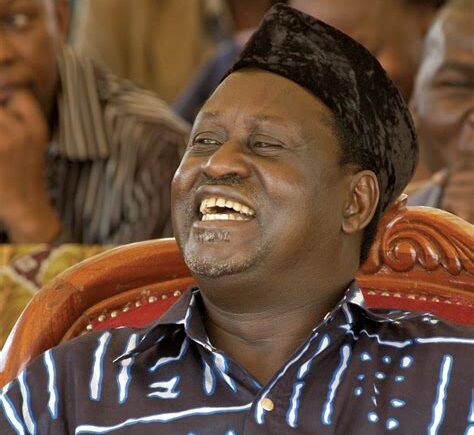Years of Detention and the Birth of a Fighter
The 1980s defined Raila Odinga’s character through fire and steel. In 1982, following an attempted coup by Kenya Air Force officers, Raila was arrested and accused of treason, a charge later dropped but not before it had sentenced him to six years of detention without trial. Much of this time was spent in the notorious Nyayo House, where he endured solitary confinement, torture, and psychological abuse designed to break the strongest of spirits. The walls of that prison became his crucible, transforming a young engineer into an unbreakable freedom fighter.
The Horror of Nyayo House: Torture That Failed to Break Him
Nyayo House, the imposing 24-story building in downtown Nairobi that housed the offices of the Criminal Investigation Department, concealed within its depths a torture chamber that would become synonymous with the Moi regime’s brutality. In its basement cells, political detainees like Raila were subjected to systematic torture designed not merely to punish, but to destroy the human spirit.
Raila was kept in a small, dark cell with no natural light for extended periods. The lack of sunlight was so prolonged that it permanently damaged his lacrimal ducts, causing his eyes to tear continuously, a physical reminder he would carry for the rest of his life. The cell was often waterlogged, forcing him to stand in knee-deep cold water for hours, sometimes days, as the dampness seeped into his bones and the filth assaulted his senses.
The physical torture was methodical and savage. His primary torturer was Josiah Kipkurui Rono, assisted by James Opiyo and Leonard Wachira, men whose names would become infamous in the testimonies of survivors. Rono once broke a chair and beat Raila savagely with the table leg, striking his head and shoulders repeatedly until he collapsed. They often jumped on his chest and genitals, inflicting pain so intense causing regular loss of consciousness. The beatings were not random acts of violence; they were calculated sessions designed to extract confessions or simply to terrorize.
Mock executions were also a favorite psychological torture technique. Guards would place a gun to Raila’s head, cock it, and pull the trigger on an empty chamber or sometimes fire into the wall behind him. The sound of the gunshot, the certainty of death in that split second, the flooding relief when consciousness remained – this cycle was repeated to keep detainees in a constant state of terror. Some prisoners were taken to the top floors of Nyayo House and threatened with being thrown from the 23rd floor. Several detainees were actually thrown to their deaths; Raila was among those who faced this threat but was spared at the last moment.
Food was weaponized. Raila was deliberately starved for days at a time. In one particularly cruel episode, Police Commissioner Ben Gethi ordered roasted goat brought to the cell area. While Raila and other detainees sat weak with hunger, Gethi ate the roasted meat in front of them, the aroma filling the air, watching their suffering with satisfaction.
Blindfolded sessions added to the disorientation. Raila would be blindfolded, bundled into a vehicle, and driven around Nairobi in circles for hours, sometimes days, before being returned to his cell. He would have no idea where he had been or what time had passed. This deliberate disorientation was meant to destroy his sense of reality and time.
Perhaps the cruelest torture was psychological. Raila was denied all contact with his family. He received no letters, no news, no visits. When his mother, Mary Juma Odinga, died on November 5, 1984, after a long battle with diabetes, Raila was not informed. He was not allowed to attend her funeral. He was not allowed to mourn. He only learned of her death weeks later, in rude passing, from a guard. The grief hit him like a physical blow, compounded by the knowledge that she had died while he was still imprisoned, unable to say goodbye.
The isolation was total. Solitary confinement in complete darkness, with only the sounds of other prisoners screaming, the footsteps of guards, the metallic clang of cell doors. Many detainees went mad in Nyayo House. Some died. Others emerged so broken they could never speak of what happened. But Raila endured.
He endured by clinging to hope. He recited poetry in his head. He did mathematical calculations to keep his mind sharp. He exercised in his cell – push-ups, sit-ups, pacing – to maintain physical strength. He refused to let them break him. And crucially, he held on to his anger at the injustice, at the cruelty, at a system that could do this to its own citizens.
Released in 1988, Raila had barely tasted freedom when he was arrested again in 1989, and yet again in 1990, alongside Kenneth Matiba and Charles Rubia, three heroes of the multiparty movement. The crime? Demanding that Kenyans have the right to choose their leaders. Fearing for his life amid signs that the government might attempt to eliminate him, Raila fled to Norway in exile in October 1991. But even from thousands of miles away, his voice remained loud, mobilizing support for democratic reform and keeping the flame of hope alive.
The Second Liberation: Fighting for Multiparty Democracy
When Kenya finally bowed to domestic and international pressure and repealed Section 2A of the Constitution in December 1991 – the provision that had made Kenya a one-party state -Raila returned home in February 1992 as a hero of the “Second Liberation.” He immediately joined the Forum for the Restoration of Democracy (FORD), the movement that had brought together his father Jaramogi, Kenneth Matiba, Charles Rubia, and other freedom fighters who had risked everything for political pluralism.
Raila was elected Vice Chairman of FORD’s General Purposes Committee, positioning himself at the heart of opposition politics. But as is often the case with movements born of struggle, unity proved elusive. In the months leading up to Kenya’s historic first multiparty elections in December 1992, FORD fractured. Kenneth Matiba led one faction, FORD-Asili, while Jaramogi Oginga Odinga led FORD-Kenya. Raila became FORD-Kenya’s Deputy Director of Elections.
Langata: The Beginning of a Parliamentary Journey
In that watershed 1992 election, Raila Odinga won the Langata Constituency parliamentary seat, defeating Philip Leakey of the ruling KANU party.
It was a significant victory, Langata, a diverse constituency in Nairobi encompassing both affluent neighborhoods and Kibera, would become Raila’s political home for the next two decades. From this seat, he would build his national profile, champion the rights of the urban poor, and establish himself as one of Kenya’s most formidable parliamentarians.
The 1992 elections, however, ended in disappointment for the opposition. President Daniel arap Moi retained power, aided significantly by the opposition’s division. The vote splitting between FORD-Kenya, FORD-Asili, and the Democratic Party handed Moi victory despite widespread discontent with his regime. It was a bitter lesson that would shape Raila’s political strategy for years to come unity was not just desirable -it was essential.
Published by the Luo National Congress
October 17, 2025


11 Responses
Your good spirit lives on wuod Luo. Good people don’t die they rest
Amen! Wuod Nyalego has fought the good fight and is now resting.
What is amazing is that after all that he not only forgave his oppressors, he went ahead and worked with them a pattern that would repeat the rest of his life when he chose to work with Kibaki, Uhuru and Ruto after the latter stole his elections.
Marvellous, long live the king,God save the king.
Incredible
Nice pieces
Hero rest well
Baba Raila Amolo Odinga fought several bottles for good governance practices and this could have liberated many within and without Kenya.Lessons learnt as luo people and other persons who want the right things to embrace Baba’s approaches even if it meant death.A few people with powers and guns always have tendencies of suffocating others,as luo people we must not accept this.God may forgive Baba for anything wrong he could have committed on earth here.May the soul of baba Raila Odinga Amolo rest in peace
So inspiring, and informative. Thank you for sharing. Great effort.
He suffered for the sake of constitutionalism and democracy. Kenya appears more democratic than her surroundings nations because of his sacrifice.
The world will miss his resourcefulness for ever.
May our Legend shine on 🙏🙏
RAO foought for democracy with his divine mechanical engineering wits. Rest well Baba 😭